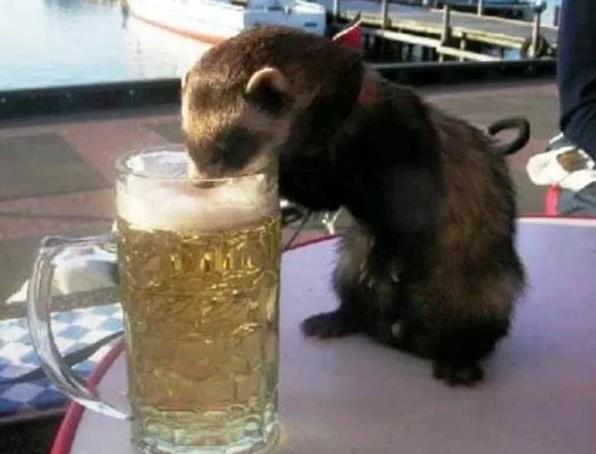Are Weasels Poisonous? March 6, 2017
Author: Beach Combing | in : Medieval, Modern , trackbackA few weeks ago Beach offered a description of fairy traditions from Marrie Walsh’s An Irish country Childhood (1996). While reading he was also struck by this tradition about weasels. What is fascinating here is that the weasel is given (in a country where snakes are in short supply) the role normally given in European folklore to vipers.
My aunt told me a story about three men who were once widening a road in the area and had to rebuild the stone fences knocked down while doing so. They came across a weasel’s nest with young ones in it. Being aware of the mystery and might surrounding these creatures and of the consequences of killing one, the men moved the nest further down the ditch. Mother weasel, missing the nest, thought her family had been destroyed. She sneaked into the house where the men’s dinner was being prepared. There were three mugs of milk already poured and seemingly the weasel poisoned them. Going out and finding the next safe and sound she returned as the men were about to take their places around the table. She jumped up, put feet on each mug and tipped the contents onto the table as the bewildered men looked on.
Poisonous weasels? The story is frequently given in the Irish School’s Survey, which was collected at almost the same time Marrie heard her tale. An example:
Many years ago, as some men were cutting corn, they found a weasel’s nest. They brought the nest to a corner of the field. When the weasel came back she could not find the nest and she thought the men had killed the young ones. The men had a can of water in the field, which they drank when thirsty. The weasel spat* into the can of water to poison it. When the weasel found the nest she went back to the can and threw out the water for fear the men would drink it.
So a common Irish tale? Beach can’t find anything from the continent but he did run into a medieval Welsh example of the tale. This is from Gerald of Wales’ Itinerary Through Wales:
In our time, a person residing at the castle of Penbroch, found a brood of young weasels concealed within a fleece in his dwelling house, which he carefully removed and hid. The mother, irritated at the loss of her young, which she had searched for in vain, went to a vessel of milk that had been set aside for the use of the master’s son, and raising herself up, polluted it with her deadly poison; thus revenging, as it were, the loss of her young, by the destruction of the child. The man, observing what passed, carried the fleece back to its former place; when the weasel, agitated by maternal solicitude, between hope and fear, on finding again her young, began to testify her joy by her cries and actions, and returning quickly to the vessel, overthrew it; thus, in gratitude for the recovery of her own offspring, saving that of her host from danger.
Can anyone go wider or earlier: does the story date back before the Middle Ages or beyond Britain and Ireland? Drbeachcombing At yahoo DOT com
*The transcriber put ‘shat’ here, but this would not have appeared in a 1930s school book and a quick look at the original confirms ‘spat’: Tulach an Iarainn (roll number 1289), Co. Waterford.



